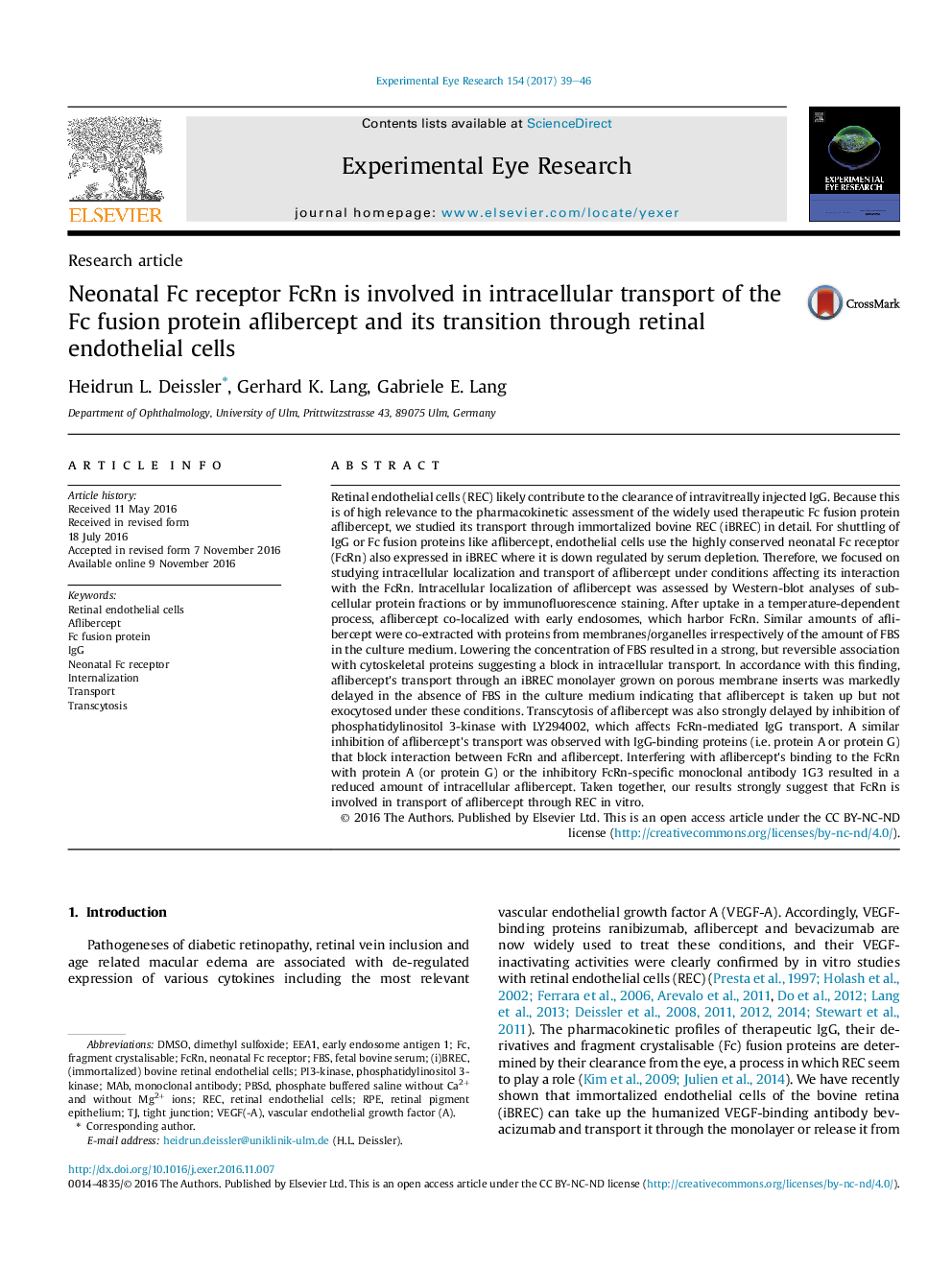| Article ID | Journal | Published Year | Pages | File Type |
|---|---|---|---|---|
| 5704131 | Experimental Eye Research | 2017 | 8 Pages |
Abstract
Retinal endothelial cells (REC) likely contribute to the clearance of intravitreally injected IgG. Because this is of high relevance to the pharmacokinetic assessment of the widely used therapeutic Fc fusion protein aflibercept, we studied its transport through immortalized bovine REC (iBREC) in detail. For shuttling of IgG or Fc fusion proteins like aflibercept, endothelial cells use the highly conserved neonatal Fc receptor (FcRn) also expressed in iBREC where it is down regulated by serum depletion. Therefore, we focused on studying intracellular localization and transport of aflibercept under conditions affecting its interaction with the FcRn. Intracellular localization of aflibercept was assessed by Western-blot analyses of subcellular protein fractions or by immunofluorescence staining. After uptake in a temperature-dependent process, aflibercept co-localized with early endosomes, which harbor FcRn. Similar amounts of aflibercept were co-extracted with proteins from membranes/organelles irrespectively of the amount of FBS in the culture medium. Lowering the concentration of FBS resulted in a strong, but reversible association with cytoskeletal proteins suggesting a block in intracellular transport. In accordance with this finding, aflibercept's transport through an iBREC monolayer grown on porous membrane inserts was markedly delayed in the absence of FBS in the culture medium indicating that aflibercept is taken up but not exocytosed under these conditions. Transcytosis of aflibercept was also strongly delayed by inhibition of phosphatidylinositol 3-kinase with LY294002, which affects FcRn-mediated IgG transport. A similar inhibition of aflibercept's transport was observed with IgG-binding proteins (i.e. protein A or protein G) that block interaction between FcRn and aflibercept. Interfering with aflibercept's binding to the FcRn with protein A (or protein G) or the inhibitory FcRn-specific monoclonal antibody 1G3 resulted in a reduced amount of intracellular aflibercept. Taken together, our results strongly suggest that FcRn is involved in transport of aflibercept through REC in vitro.
Keywords
Related Topics
Life Sciences
Immunology and Microbiology
Immunology and Microbiology (General)
Authors
Heidrun L. Deissler, Gerhard K. Lang, Gabriele E. Lang,
